An overnight drop into the chilly forties (Fahrenheit) verifies autumn’s arrival as September nears its end. The turn of foliage to autumn colors is a few weeks off, but berries and buds that promise spring flowers are scattered through the garden.
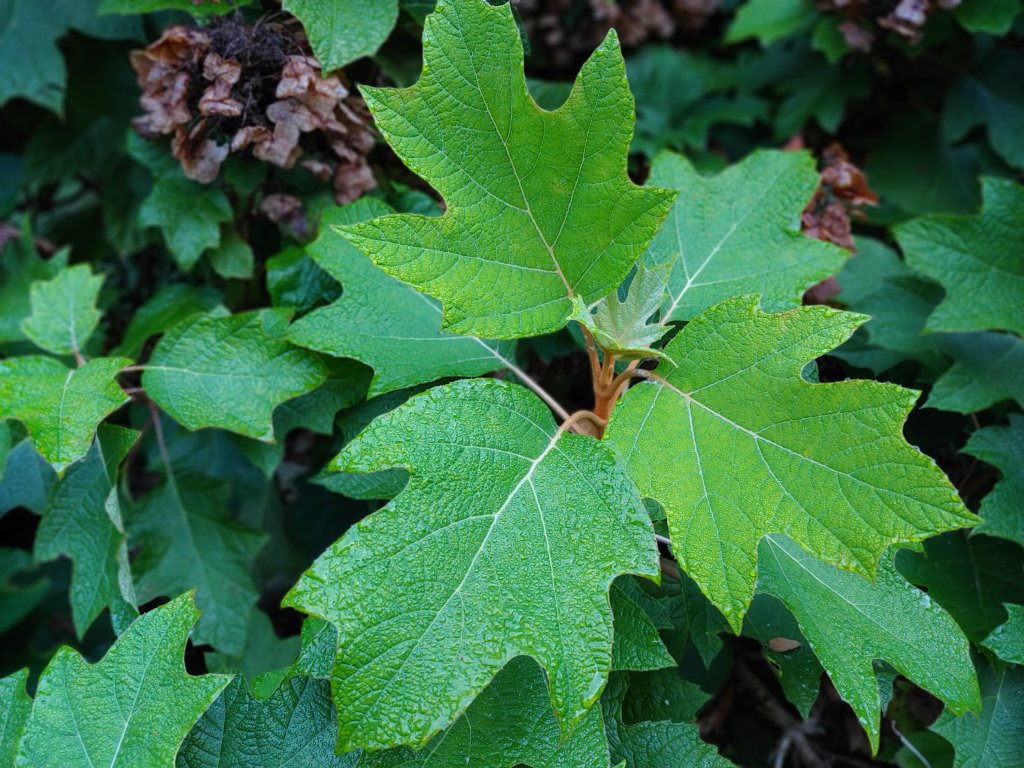
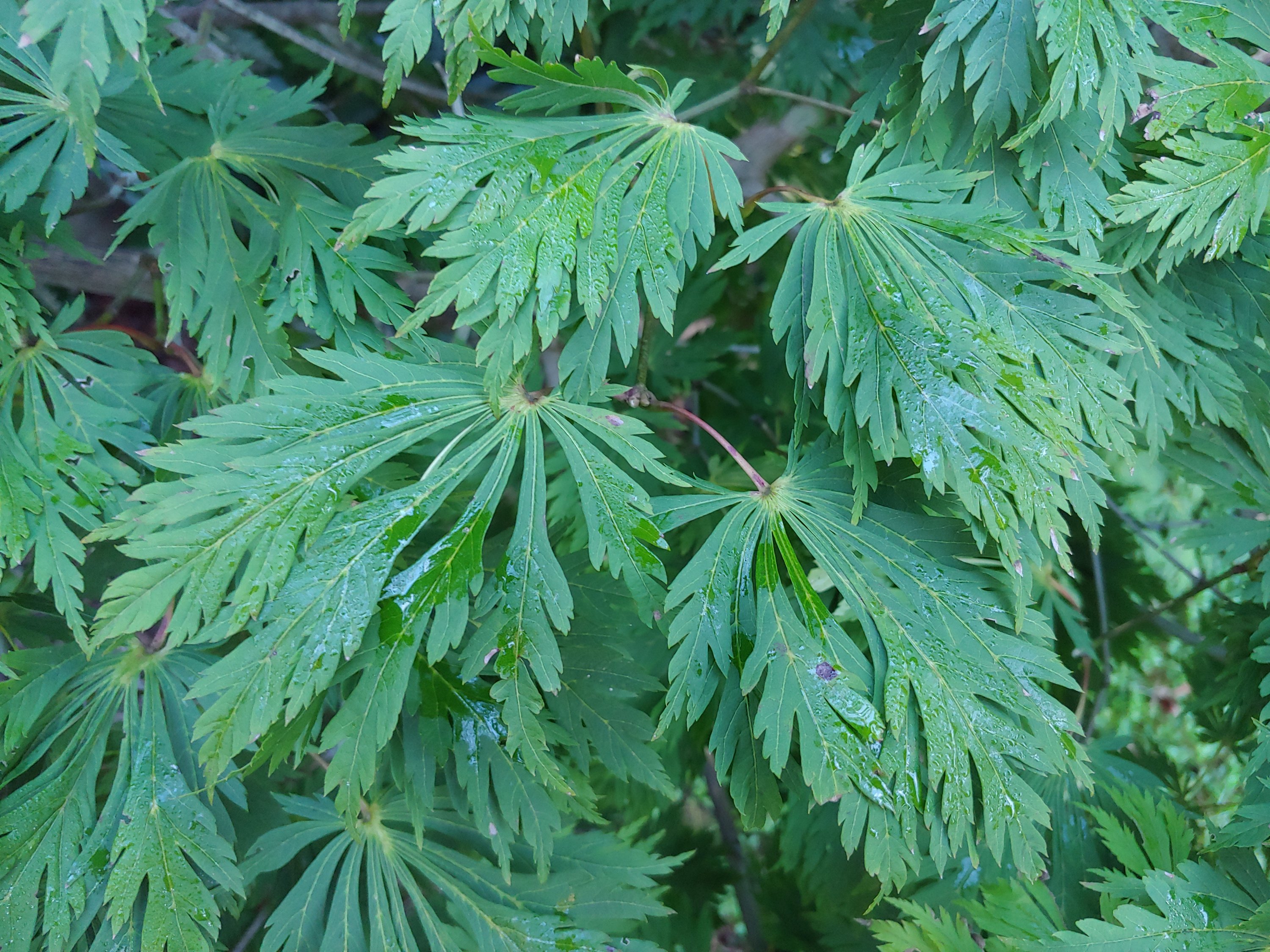
The tall ‘Jindai’ aster (below) is nearing its peak autumn bloom with fat carpenter bees feasting on its nectar once the sun has climbed above the forest of tulip poplars and maples that borders the garden. The sun’s more southerly path in autumn brings more shade to this shaded garden before falling leaves bring sunlight again by late in the season.

Plans are made to soon add yellow berried hollies (Ilex verticillata ‘Berry Heavy Gold’) to join red berried cousins (Ilex verticillata’Red Sprite’, below) in the garden that borders the driveway. Here, yellow, pink, orange, and red flowers of tall deciduous azaleas in spring and early summer will be followed by red and yellow berries on the hollies’ bare stems by mid autumn.
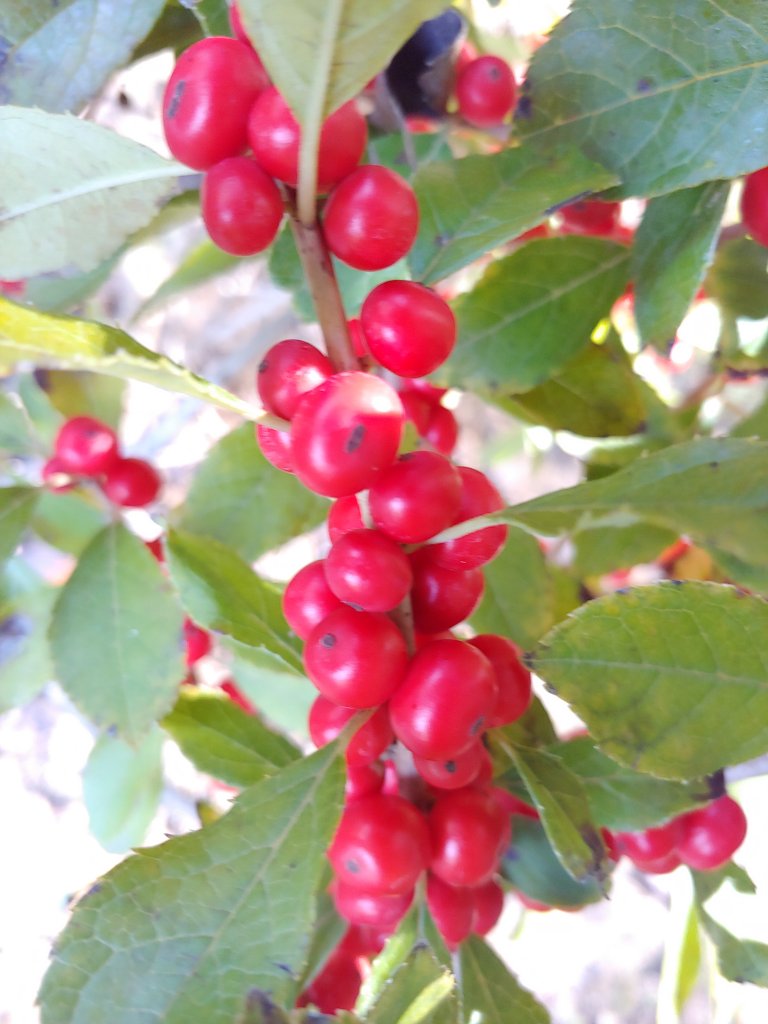


In sun and shade, a variety of delightful beautyberries (Callicarpa, above and below) ornament the garden. Berries are a week later arriving, and slightly more sparse in shade, but purple berries are cherished in the greenery of the shade.
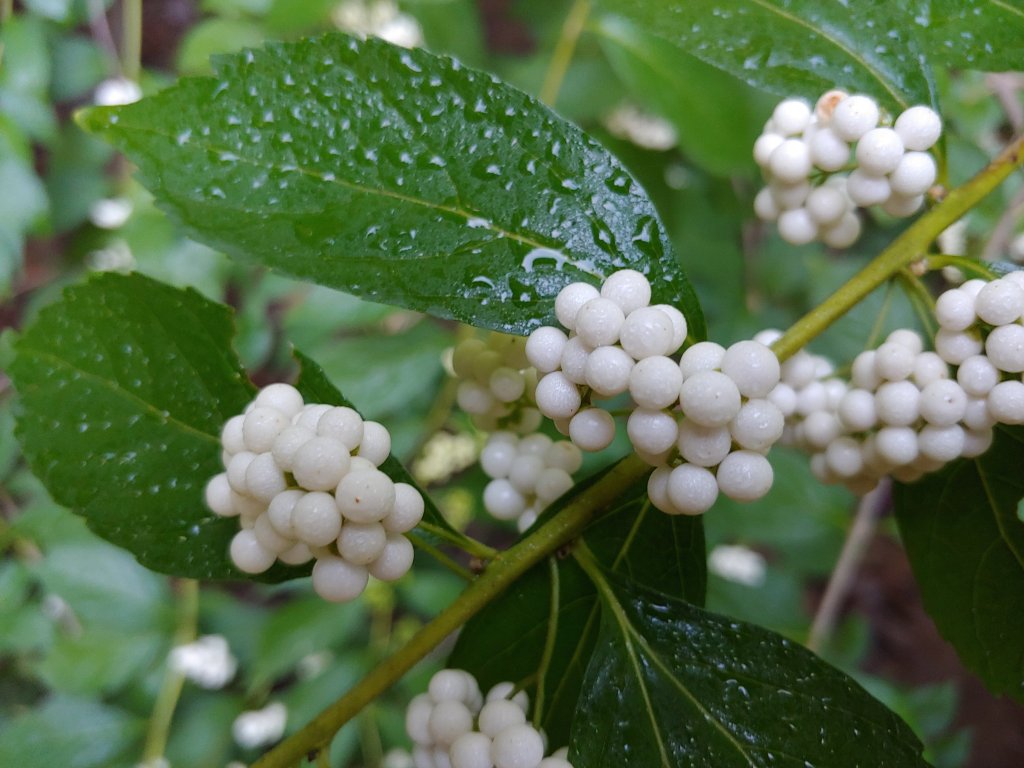
Flower buds of three overly vigorous paperbushes (Edgeworthia chrysantha, below) are much larger than usual, and larger than two others growing in too much shade. The three paperbushes are nearly twenty feet across, and all are likely to be pruned substantially after their late winter bloom.
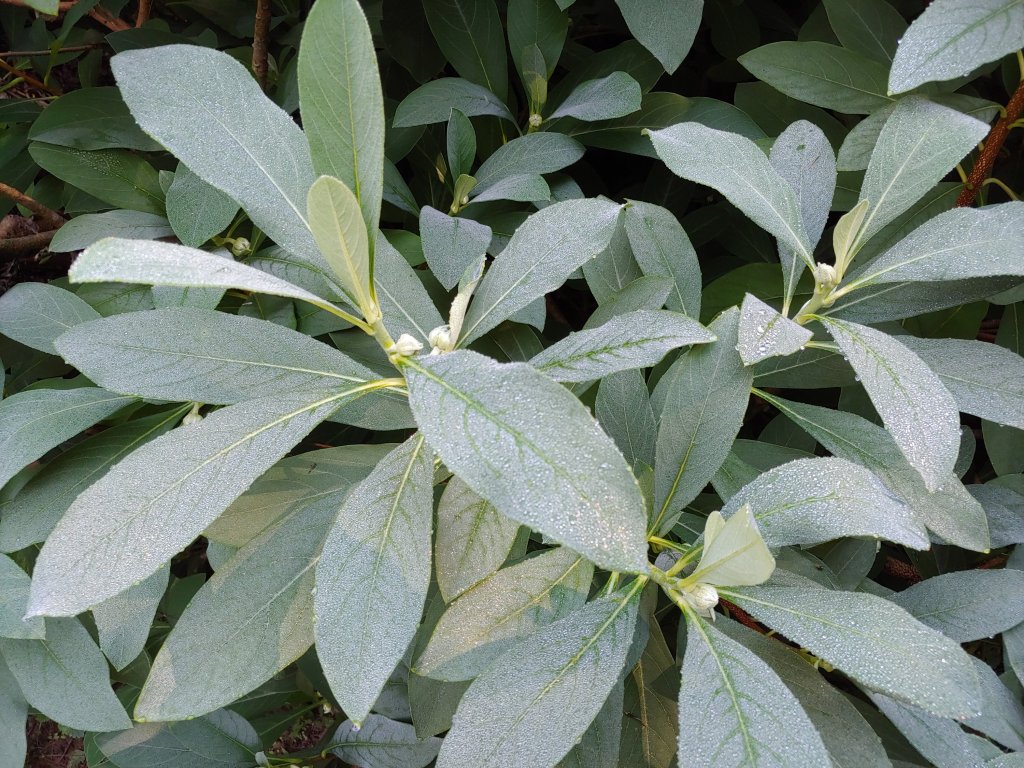

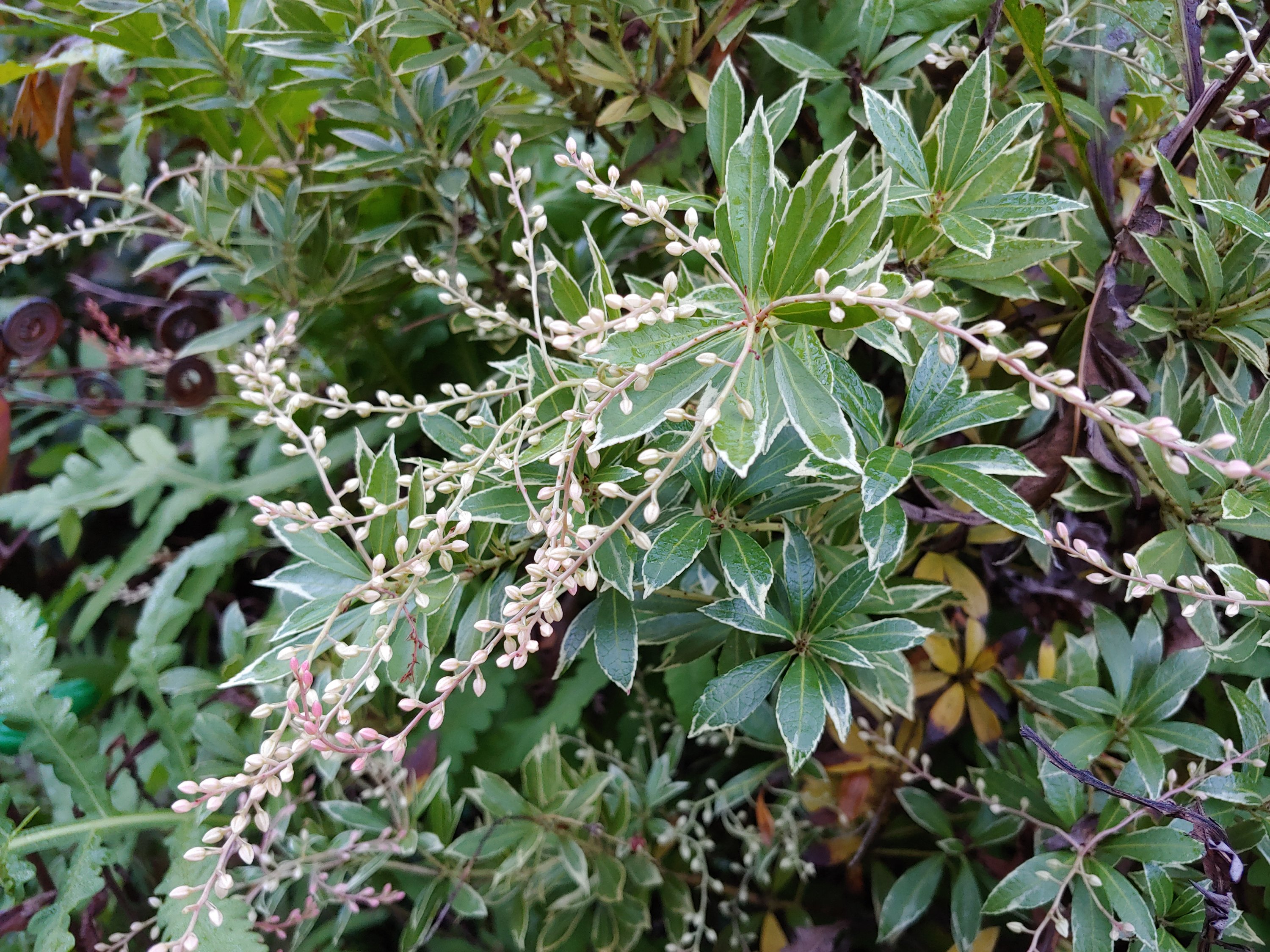
Is your beautyberry Callicarpa americana, or is it another, non-native type? How important is it for the birds in my yard to feed off of berries from native plants, as opposed to non-native plants? I am conflicted on this issue; I am striving for diversity in my plantings, but I don’t know if I should stick with only native plants. The beautyberry in your photo is the first I’ve ever see of this plant. I will look for a beautyberry to add to my backyard. Thanks.
The callicarpa in the photo is not the native. I think I have it somewhere out here, but berries of the native cluster all the way around the stems while non natives cluster above the stem. I can’t imagine there’s any difference to the birds, but the native is just as ornamental from what I’ve seen. It can be more difficult to find, however.
I’ve added the photo for Callicarpa americana. It is slightly shaded so the berries are not quite as ripe. They are as colorful as other beautyberries once ripe.
Thanks!
Hello Dave, a sort of off topic Q, but could you please recommend a variety of Pomegranate tree that I can plant in Bethesda area (full sun 12 hours, open yard, not sheltered location)? I want to plant it for fruit, not just as an ornamental tree. Would love if MF can special order one for me, but I want to be sure the variety is suitable for 7a. Many thanks in advance for your help and expertise.
I’m sorry, I have no experience with pomegranate to recommend. The garden centers’ source for fruit trees offers the following choices, ‘Ambrosia’, ‘Granada’, and ‘Wonderful’, but none could be ordered until spring.